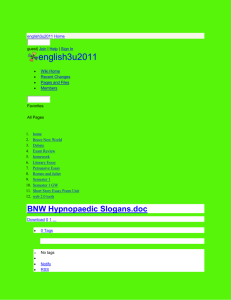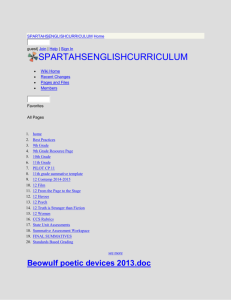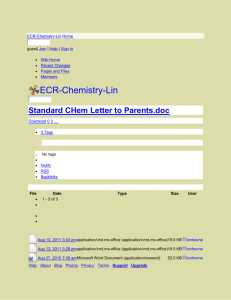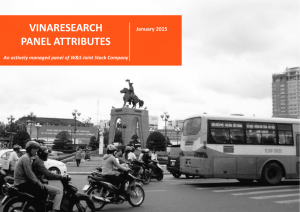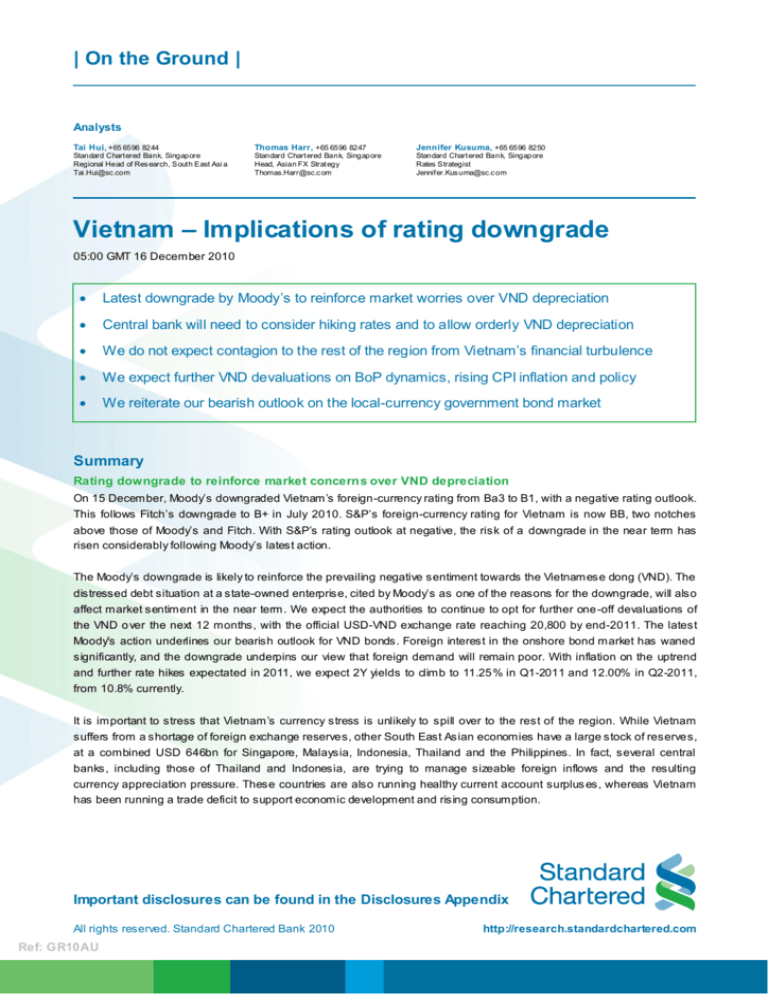
| On the Ground |
Analysts
Tai Hui , +65 6596 8244
Thomas Harr, +65 6596 8247
Jennifer Kusuma, +65 6596 8250
Standard Chartered Bank, Singapore
Regional Head of Res earch, South East Asi a
Tai.Hui@sc.com
Standard Chartered Bank, Singapore
Head, Asian FX Strategy
Thomas.Harr@sc.c om
Standard Chartered Bank, Singapore
Rates Strategist
Jennifer.Kus uma@sc.c om
Vietnam – Implications of rating downgrade
05:00 GMT 16 December 2010
Latest downgrade by Moody’s to reinforce market worries over VND depreciation
Central bank will need to consider hiking rates and to allow orderly VND depreciation
We do not expect contagion to the rest of the region from Vietnam’s financial turbulence
We expect further VND devaluations on BoP dynamics, rising CPI inflation and policy
We reiterate our bearish outlook on the local-currency government bond market
Summary
Rating downgrade to reinforce market concerns over VND depreciation
On 15 December, Moody’s downgraded Vietnam’s foreign-currency rating from Ba3 to B1, with a negative rating outlook.
This follows Fitch’s downgrade to B+ in July 2010. S&P’s foreign-currency rating for Vietnam is now BB, two notches
above those of Moody’s and Fitch. With S&P’s rating outlook at negative, the risk of a downgrade in the near term has
risen considerably following Moody’s latest action.
The Moody’s downgrade is likely to reinforce the prevailing negative sentiment towards the Vietnamese dong (VND). The
distressed debt situation at a state-owned enterprise, cited by Moody’s as one of the reasons for the downgrade, will also
affect market sentiment in the near term . We expect the authorities to continue to opt for further one -off devaluations of
the VND o ver the next 12 months, with the official USD-VND exchange rate reaching 20,800 by end-2011. The latest
Moody's action underlines our bearish outlook for VND bonds. Foreign interest in the onshore bond market has waned
significantly, and the downgrade underpins our view that foreign demand will remain poor. With inflation on the uptrend
and further rate hikes expectated in 2011, we expect 2Y yields to climb to 11.25% in Q1-2011 and 12.00% in Q2-2011,
from 10.8% currently.
It is important to stress that Vietnam’s currency stress is unlikely to spill over to the rest of the region. While Vietnam
suffers from a shortage of foreign exchange reserves, other South East Asian economies have a large stock of reserves,
at a combined USD 646bn for Singapore, Malaysia, Indonesia, Thailand and the Philippines. In fact, several central
banks, including those of Thailand and Indonesia, are trying to manage sizeable foreign inflows and the resulting
currency appreciation pressure. These countries are also running healthy current account surplus es, whereas Vietnam
has been running a trade deficit to support economic development and rising consumption.
Important disclosures can be found in the Disclosures Appendix
All rights reserved. Standard Chartered Bank 2010
Ref: GR10AU
http://research.standardchartered.com
On the Ground | 16 December 2010
A shortage of foreign-currency reserve s and confidence
Even before the rating downgrade, the VND was already in a position of weakness in terms of investor confidence.
Higher gold prices (Chart 1) and rising inflation, which breached 10% y/y in November (Chart 2), have prompted local
investors to switch from the VND to gold and USD. (In the absence of a better reflection of the parallel USD-VND
exchange rate, we use the USD-VND 12M non-deliverable forward, or NDF, to illustrate market perceptions; however,
we note that the liquidity in this market is thin.) The inflation surge in recent months has been led by food and
transportation costs. Due to the erosion of the value of the VND and competition from gold and USD, Vietnam’s FX
reserves have stabilised at around 1.8 months of imports, according to the IMF. B y our calculation, this translates into
around USD 12bn of reserves, based on the average monthly import value for the first 11 months of 2010. The low level
of FX reserves does little to support confidence in the VND.
Chart 2: Inflation is on the rise again in Vietnam
4.0
24000
30
3.5
23000
25
3.0
22000
20
2.5
21000
2.0
20000
1.5
19000
%
VND/chi
Chart 1: Higher local gold price puts downward
pressure on VND
15
10
5
1.0
18000
Nov-08 Mar-09 Jul-09 Nov-09 Apr-10 Aug-10 Dec-10
0
Jan-08
Domestic gold price (Grade 99)
Jul-08
Jan-09
Jul-09
Jan-10
Jul-10
CPI Inflation y/y
USD-VND 12M NDF (RHS)
Sources: CEIC, Standard Chartered Research
Sources: CEIC, Standard Chartered Research
While market sentiment is clearly fragile, one needs to put Vietnam’s balance-of-payments position in perspective. The
trade deficit is likely to reach USD 12bn in 2010, compared with projected overseas remittance inflows of around USD
7bn. Meanwhile, disbursed foreign direct investment (FDI) was reportedly USD 10bn for the first 11 months of the year,
and overseas development assistance (ODA) will total around USD 4.3bn. So while Vietnam’s external position is in a
delicate balance, it is not necessarily in crisis mode.
The Moody’s downgrade is justified by factors beyond the rise in inflation and the country’s balance-of-payments position.
Rapid lending growth in 2009 and 2010 to support economic expansion has led to a possible deterioration of credit
quality in the banking sector. The lack of public data on this front makes assessing such risks a challenge. Meanwhile,
Moody’s also cited the distressed debt situation at a state-owned enterprise as a factor that could weaken the
government’s ability to support other SOEs in meeting their external debt obligations. This could in turn undermine
international investor confidence in debt raised by the Vietnamese government or SOEs.
Policy response – higher rate s and orderly currency depreciation are needed
Given that Vietnam’s inflation is likely to remain elevated in the short term due to year -end and Tet (Lunar New Year)
spending, the VND is likely to remain under pressure. While the easing of gold prices may have provided some relief, this
is an exogenous factor rather than a domestically determined one (though the government has tried to cool gold prices
by rela xing restrictions on gold imports). The government could allow the currency to depreciate in steps, as it has done
in the past 12 months, or raise interest rates to make the VND more attractive to hold. The State Bank of Vietnam (SBV)
capped the deposit rate at 14% on 15 December. While this could be adjusted higher, the central bank’s action can be
interpreted as a desire to keep interest rates at reasonable levels without allowing them to spike.
Ref: GR10AU
2
On the Ground | 16 December 2010
Chart 3: SBV has devalued the VND in steps
Chart 4: Base rate may need to rise further
20000
16
14
19500
12
19000
10
%
18500
8
6
18000
4
17500
17000
Jan-09
2
May-09
Sep-09
Jan-10
May-10
0
Mar-04 Mar-05 Mar-06 Mar-07 Mar-08 Mar-09 Mar-10
Sep-10
USD-VND
Base rate
Sources: Bloomberg, Standard Chartered Research
Sources: CEIC, Standard Chartered Research
Implications for the region – an exceptional case
We believe the current financial stress in Vietnam should have a limited impact on the rest of the region. Some of the
root causes of Vietnam’s problem are unique to the country. Other South East Asian economies have much larger FX
reserves (Chart 5) and current account surplus es (Chart 6), while Vietnam has low FX reserves and a current account
deficit. Moreover, these economies have seen considerable capital inflows and , subsequently, currency appreciation. In
fact, Thailand and Indonesia have implemented measures to stem short-term capital flows and limit currency
appreciation, albeit with limited success. International investors are fully aware of these differences. Moreover, foreign
participation in local markets has been low in Vietnam since the bond-market crash in 2008, and VND depreciation has
been largely driven by domestic inves tor sentiment, in our view. As such, the risk of contagion to other South East Asian
countries from further VND devaluations is limited, in our view.
Chart 5: FX reserves in South East Asia (USD b n)
Chart 6: Current account balance in 2010 (% of GDP)
20
250
15
200
10
150
5
100
0
50
-5
0
-10
Singapore Thailand Malaysia Indonesia Philippines Vietnam
Malaysia Singapore Philippines Thailand Indonesia Vietnam
Sources: Bloomberg, Standard Chartered Research
Ref: GR10AU
Sources: CEIC, Standard Chartered Research
3
On the Ground | 16 December 2010
FX economics
We forecast that Vietnam’s GDP growth will accelerate to 7.2% in 2011 from 6.7% in 2010 due to robust domestic
demand. We e xpect CPI inflation to rise to 10.5% in 2011 from 8.9% in 2010 on rising commodity prices ; the SBV is
likely to raise interest rates in Q2, with rates peaking at 11% in Q3 (versus 9% currently). While the trade deficit has
stabilised since H1-2008, the risk is that the deficit will widen again in 2011 amid strong domestic demand and higher
commodity prices. Inflows from FDI, inward remittances and ODA may cover the shortfall, but overall balance-ofpayments dynamics are likely to turn less favourable in 2011 than in 2010. We note that Vietnam’s ratio of estimated FX
reserves to average monthly imports is very low, at 1.8 months.
FX outlook
We have short- and medium-term Neutral FX ratings on the VND; this largely reflects the fact that USD-VND forwards
(both deliverable and non-deliverable) already factor in substantial VND depreciation. We forecast further one-off VND
devaluations throughout 2011 on deteriorating external balances, higher CPI inflation and FX policy. We see balance-ofpayment dynamics turning less favourable for the VND in 2011 than in 2010, which is a concern given the low level of FX
reserves. Moreover, there is a substantial risk that the market will perceive the SBV as falling behind the curve in raising
interest rates. This recalls the experience of late 2007 and early 2008 , when the SBV was slow to react to a sharp rise in
CPI inflation, which triggered a sharp sell-off in local asset markets and the VND. Finally, the SBV’s credibility is low, as
the central bank has on a number of occasions devalued the VND immediately after pledging to keep USD-VND stable.
We forecast that the official USD-VND exchange rate will rise to 20,800 at end-2011.
Table 1: Standard Chartered Bank USD-VND forecasts
End- Q4-10
End- Q1-11
End- Q2-11
End- Q3-11
End- Q4-11
USD-VND
19,900
20,000
20,400
20,500
20,800
Forward (mid)
20,974
21,600
22,147
22,620
23,185
Source: Standard Chartered Research
FX strategy – corporates
Transaction risk
USD-VND onshore forwards are currently indicated at 21,600 at end-Q1-2011, 22,147 at end-Q2, 22,620 at end-Q3 and
23,185 at end-Q4 (mid), respectively. These levels are substantially above our USD-VND forecasts, especially for longer
tenors. However, risk-averse corporates may want to factor in the risk of sharper VND devaluations than we forecast. As
such, risk-averse Vietnamese importers should maintain high hedge ratios on USD payables. The same is the case for
euro (EUR) and Japanese yen (JPY) payables. For Vietnamese exporters, the opposite conclusions apply.
Translation risk
With respect to translation risk, we expect the VND to continue to depreciate versus the USD over the coming year, and
the risk is for sharper depreciation than we anticipate. As such, we advise USD -based clients to maintain high hedge
ratios for VND-denominated assets. EUR-, GBP-, AUD-, NZD- and JPY-based corporates should also maintain high
balance-sheet hedges of VND-denominated assets. Only when Vietnam’s balance of payments has become more
favourable and the SBV has stopped repeated devaluations will we advise global corporates to lower their VND balance sheet hedges. Similarly, Vietnamese corporates with G10 subsidiaries should maintain low balance -sheet hedges on
G10 currencies.
Ref: GR10AU
4
On the Ground | 16 December 2010
Rates – Upward pressure on government bond yields to continue through H1 -2011
We reiterate our bearish outlook for the VND government bond market through H1-2011. We expect heightened market
expectations of further rate hikes (on the pick-up in inflation, the widening trade deficit and increasing pressure on the
currency) to undermine the local-currency bond market. The Moody’s rating downgrade will not have a direct impact on
bonds, as foreign participation in the market has been minimal since 2008. The market reaction was similarly muted
following Fitch’s rating downgrade in July 2010, although domestic sentiment then was well supported by the SBV’s
accommodative monetary policy, still-benign inflation, and the strong economic growth outlook. The impact of the
Moody’s downgrade on the bond market will instead take the form of heightened pressure on the VND, leading to a
greater pick-up in imported inflation. The SBV is already at risk of falling behind the curve, as CPI inflation has gained
pace in Q4-2010.
Further rate hikes by the SBV will add upward pressure on bond yields and money market rates. Against its earlier
rhetoric, the SBV hiked the base policy rate in November 2010, triggering a rise in bond yields across the curve and a
spike in interbank overnight rates. Liquidity conditions have remained tight, with the SBV having to push the outstanding
open-market operations (OMO) amount to above VND 100trn (see Chart 7). The SBV also increased the 7-day OMO
funding rate to 10% from 7% in October. While the requirement for banks to hold government bonds as the underlying
asset for repos with the central bank is providing support to the bond market, the pick-up in the OMO rate has narrowed
spreads between bond yields and the OMO rate. To illustrate, the 2Y bond yield to the 7 -day OMO rate is now only
80bps, versus 320bps in June (see Chart 8). Money market rates may remain elevated until the Tet holiday in early
February 2011. With CPI inflation on the uptrend, further rate hikes expected, and tight liquidity, we forecast that 2Y
yields will rise to 11.25% in Q1-2011 and 12.00% in Q2-2011, from 10.8% currently.
Chart 7: SBV has provided liquidity through OMOs
13
130
12
110
12
11
90
70
9
10
7
Interbank
O/N
6
Jan-10 Mar-10 May-10
Jul-10
CPI YOY
9
50
8
2Y yield
%
Outstanding
OMO (rhs)
%
10
13
VND trn
11
Chart 8: Upward pressure on VGB yield
8
30
7
10
6
Jan-10
Sep-10 Nov-10
Sources: Bloomberg, Standard Chartered Research
OMO rate*
Mar-10
May-10
Jul-10
Sep-10
Nov-10
* This rate is constructed from both 7-day and 14-day OMO rates;
Source: Bloomberg
Ref: GR10AU
5
On the Ground | 16 December 2010
Disclosures Appendix
Analyst Certification Disclosure:
The research analyst or analysts responsible for the content of this researc h report certif y that: (1) the views expressed and attributed to
the research analyst or analysts in the research report accurately reflect their personal opinion(s) about the subject securities and
issuers and/or other subject matter as appropriate; and, (2) no part of his or her compensation was, is or w ill be directly or indirectly
related to the specif ic recommendations or views contained in this research report. On a general basis, the effic acy of recommendations
is a factor in the performance appraisals of analysts.
Global Disclaimer:
Standard Chartered Bank and or its affiliates ("SCB”) makes no representation or warranty of any kind, express, implied or st atutory
regarding this document or any information contained or referred to on the document.
The information in this document is provided for information purposes only. It does not constitute any offer, recommendation or
solicitation to any person to enter into any transaction or adopt any hedging, trading or investment strategy, nor does it constitute any
prediction of likely future movements in rates or prices, or represent that any such future movements will not exceed those s hown in any
illustration. Users of this document should seek advic e regarding the appropriateness of investing in any secur ities, financial instruments
or investment strategies referred to on this document and should understand that statements regarding future prospects may no t be
realised. Opinions, projections and estimates are subject to change without notice.
The value and income of any of the securities or financial instruments mentioned in this document can fall as well as rise and an
investor may get back less than invested. Foreign-currency denominated securities and financial instruments are subject to fluctuation in
exchange rates that could have a positive or adverse effect on the value, price or income of such securities and financial ins truments.
Past performance is not indicative of comparable future results and no representation or warranty is made regarding futur e performance.
SCB is not a legal or tax adviser, and is not purporting to provide legal or tax advic e. Independent legal and/or tax advice should be
sought for any queries relating to the legal or tax implications of any investment.
SCB, and/or a connected company, may have a position in any of the instruments or currencies mentioned in this document. SCB
and/or a connected company may at any time, to the extent permitted by applicable law and/or regulation, be long or short any
securities or financial instruments referred to in this document or have a material interest in any such securities or related investment, or
may be the only market maker in relation to such investments, or provide, or have provided advice, investment banking or other services,
to issuers of such investments.
SCB has in place policies and procedures and physical information w alls between its Research Department and differing public and
private business functions to help ensure confidential information, including ‘inside’ information is not publicly disclosed unless in line
with its policies and procedures and the rules of its regulators.
You are advis ed to make your own independent judgment w ith respect to any matter contained herein.
SCB accepts no liability and w ill not be liable for any loss or damage arising directly or indirectly (including special, incidental or
consequential loss or damage) from your use of this document, howsoever arising, and including any loss, damage or expense ar ising
from, but not limited to, any defect, error, imperfection, fault, mistake or inaccuracy w ith this document, its contents or associated
services, or due to any unavailability of the document or any part thereof or any contents or associated servic es.
If you are receiving this document in any of the countries listed below, please note the following:
United Kingdom : SCB is authorised and regulated in the United Kingdom by the Financial Services Authority (FSA). This
communication is not directed at Retail Clients in the European Economic Area as defined by Directiv e 2004/39/EC. Nothing in this
document constitutes a personal recommendation or investment advice as defined by Directive 2004/39/EC. Australia: The Australian
Financial Services License for SCB is License No: 246833 w ith the following Australian Registered Business Number (ARBN:
097571778). Australian investors should note that this document w as prepared for wholesale investors only (as defined by Australian
Corporations legislation). China: This document is being distributed in China by, and is attributable to, Standard Chartered Bank (China)
Limited w hich is mainly regulated by China Banking Regulatory Commission (CBRC), State Administration of Foreign Exchange (SA FE),
and People’s Bank of China ( PBoC). Hong Kong: This document is being distributed in Hong Kong by, and is attributable to, Standard
Chartered Bank (Hong Kong) Limited w hic h is regulated by the Hong Kong Monetary Authority. Japan: This document is being
distributed to Specified Investors, as defined by the Financial Instruments and Exchange Law of Japan (FIEL), for information only and
not for the purpose of soliciting any Financial Instruments Transactions as defined by the FIEL or any Specif ied Deposits, et c. as
Ref: GR10AU
6
On the Ground | 16 December 2010
defined by the Banking Law of Japan. Singapore: This document is being distributed in Singapore by SCB Singapore branch, only to
accredited investors, expert investors or institutional investors, as defined in the Securities and Futures Act, Chapter 289 of Singapore.
Recipients in Singapore should contact SCB Singapore branch in relation to any matters aris ing from, or in connection with, this
document. South Africa: SCB is licensed as a Financial Services Provider in terms of Section 8 of the Financial Advisory and
Intermediary Services Act 37 of 2002. SCB is a Registered Credit provider in terms of the National Credit Act 34 of 2005 under
registration number NCRCP4. UAE (DIFC): SCB is regulated in the Dubai International Financial Centre by the Dubai Financial
Services Authority. This document is intended for use only by Professional Clients and should not be relied upon by or be distributed to
Retail Clients. United States: Except for any documents relating to foreign exchange, FX or global FX, Rates or Commodities,
distribution of this document in the United States or to US persons is intended to be solely to major institutional investors as defined in
Rule 15a-6(a)(2) under the US Securities Act of 1934. All US persons that receive this document by their acceptance thereof represent
and agree that they are a major institutional investor and understand the risks involv ed in executing transactions in securities. Any US
recipient of this document wanting additional information or to effect any transaction in any security or financial instrumen t mentioned
herein, must do so by contacting a registered representative of Standard Chartered Securities (North America) Inc., 1 Madison Avenue,
New York, N.Y. 10010, US, tel + 1 212 667 0700. WE DO NOT OFFER OR SELL SECURITIES TO U.S. PERSONS UNLESS EITHER
(A) THOSE SECURITIES ARE REGISTERED FOR SALE WITH THE U.S. SECURITIES AND EXCHANGE COMMISSION AND WITH
ALL APPROPRIATE U.S. STATE AUTHORITIES; OR (B) THE SECURITIES OR THE SPECIFIC TRANSACTION QUALIFY FOR AN
EXEMPTION UNDER THE U.S. FEDERAL AND STATE SECURITIES LAWS NOR DO WE OFFER OR SELL SECURITIES TO U.S.
PERSONS UNLESS (i) WE, OUR AFFILIATED COMPANY AND THE APPROPRIATE PERSONNEL ARE PROPERLY REGISTERED
OR LICENSED TO CONDUCT BUSINESS; OR (ii) WE, OUR AFFILIATED COMPANY AND THE APPROPRIATE PERSONNEL
QUALIFY FOR EXEMPTIONS UNDER APPLICABLE U.S. FEDERAL AND STATE LAWS.
Copyright: Standard Chartered Bank 2010. Copyright in all materials, text, articles and information contained herein is
the property of, and may only be reproduced with permission of an authorised signatory of, Sta ndard Chartered Bank.
Copyright in materials created by third parties and the rights under copyright of such parties are hereby acknowledged.
Copyright in all other materials not belonging to third parties and copyright in these materials as a compilation vests and
shall remain at all times copyright of Standard Chartered Bank and should not be reproduced or used except for
business purposes on behalf of Standard Chartered Bank or save with the express prior written consent of an authorised
signatory of Standard Chartered Bank. All rights reserved. © Standard Chartered Bank 2010.
Data available as of 05:00 GMT 16 December 2010. This document is released at 05:00 GMT 16 December 2010.
Document approved by: Nicholas Kwan, Head of Research, East.
Ref: GR10AU
7

